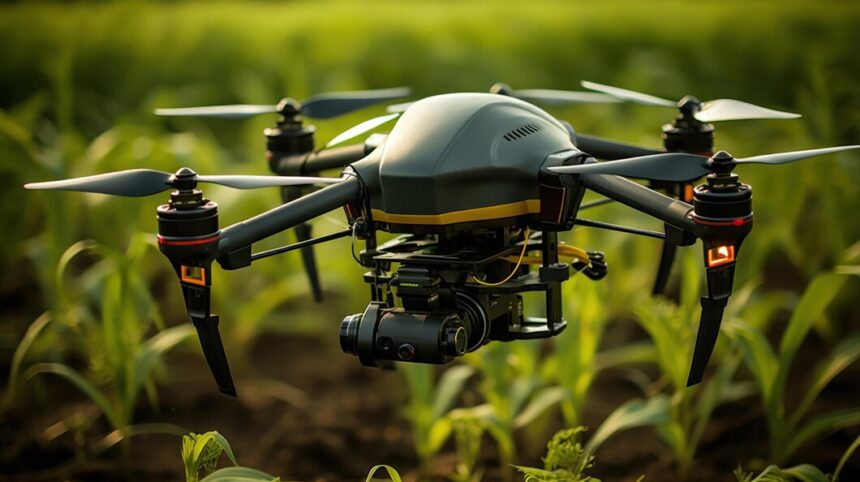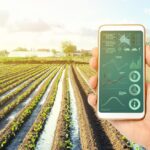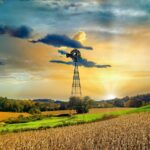In the fast-evolving world of agriculture, new technologies are helping farmers become more efficient, productive, and sustainable. One such technology making waves in South Africa’s agricultural landscape is the use of drones. These unmanned aerial vehicles (UAVs) are transforming farming by offering precision, efficiency, and real-time insights into crop health, soil conditions, and livestock management. Whether you’re a small-scale or commercial farmer, drones can play a critical role in enhancing your farm’s operations.
Here’s how drones can help improve your farm’s efficiency and profitability.
1. Precision Agriculture with Drones
Drones equipped with advanced sensors and cameras enable farmers to practice precision agriculture, a method that focuses on optimizing inputs like water, fertilizer, and pesticides based on the specific needs of each part of the field.
- Benefits:
- Soil and field analysis: Before planting, drones can perform 3D mapping of your fields to provide data on soil health, topography, and moisture levels. This helps farmers identify which areas may need more irrigation or different planting techniques.
- Variable rate application (VRA): By monitoring crop conditions and soil health, drones allow farmers to apply the right amount of water, fertilizer, and pesticides exactly where they are needed. This reduces waste, saves costs, and increases yield by targeting specific areas for treatment.
Example in Practice: In South Africa’s maize farming regions, drones have been used to monitor soil moisture levels, allowing farmers to adjust irrigation schedules and reduce water usage without sacrificing crop quality.
2. Efficient Crop Monitoring
Manually inspecting large fields is time-consuming and often results in missing key issues such as pest infestations or nutrient deficiencies. Drones streamline this process by providing real-time aerial footage and data.
- Benefits:
- Frequent monitoring: Drones can capture high-resolution images of crops regularly, allowing farmers to identify problems like disease outbreaks or pest invasions early, long before they cause serious damage.
- NDVI analysis: Drones equipped with Normalized Difference Vegetation Index (NDVI) sensors can measure the health of plants by analyzing light reflection patterns. Healthy plants reflect more near-infrared light, while stressed plants reflect less. This data helps farmers quickly detect areas of concern in large fields.
- Spot Treatment: When issues like pests or disease are detected early, farmers can address them with spot treatments, applying pesticides or fungicides only where necessary, rather than blanket spraying the entire field.
Example in Practice: Farmers in the Western Cape’s vineyards are using drones for crop health monitoring to detect diseases like downy mildew, reducing chemical use and improving the overall quality of grapes.
3. Enhanced Irrigation Management
Water is a precious resource in South Africa, where many regions experience periodic droughts. Efficient water usage is critical for farm productivity, and drones can help monitor water distribution across fields, ensuring optimal irrigation.
- Benefits:
- Detecting water stress: Drones can quickly identify areas where crops are under-watered or over-watered by detecting variations in plant health through infrared and thermal imaging.
- Improving irrigation systems: By analyzing soil moisture levels and irrigation patterns, drones help farmers design more efficient irrigation schedules and reduce water waste.
Example in Practice: In the Northern Cape’s irrigation-intensive farms, drones are helping to map out areas of the field where water isn’t reaching due to clogged systems or uneven distribution, allowing farmers to make necessary repairs and adjustments.
4. Livestock Monitoring and Management
In addition to crop farming, drones are increasingly being used in livestock management, particularly in large or remote areas.
- Benefits:
- Monitoring animal health and behavior: Drones equipped with thermal cameras can monitor livestock health, spotting signs of illness or injury from a distance.
- Tracking and counting livestock: Drones provide an efficient way to track herd movement, locate stray animals, and count livestock, reducing the time spent walking the fields or pastures.
- Security and anti-poaching: Drones can patrol farms and ranches, especially at night, to prevent livestock theft or poaching, a growing issue for many South African farmers.
Example in Practice: In KwaZulu-Natal, farmers are using drones to monitor cattle herds on large pastures, identifying potential health issues early, reducing loss, and improving overall herd management.
5. Efficient Spraying of Pesticides and Fertilizers
One of the most time-consuming tasks in farming is the application of pesticides, herbicides, and fertilizers. Drones can take over this task, offering faster and more precise spraying.
- Benefits:
- Faster application: Drones can cover large areas in a fraction of the time it takes traditional ground equipment to spray crops. This is particularly useful for steep or uneven terrain where tractors or other vehicles might struggle.
- Precision spraying: Drones equipped with GPS technology can be programmed to spray only where needed, reducing chemical waste and preventing over-application that can harm the environment.
Example in Practice: In the Free State, soybean farmers are using drones for pesticide application, cutting down labor costs and ensuring that only infested areas are sprayed, minimizing chemical exposure to other parts of the field.
6. Disaster Management and Insurance Claims
Drones can play a crucial role in disaster management, particularly after events like floods, droughts, or hailstorms, which are common in some parts of South Africa.
- Benefits:
- Damage assessment: After extreme weather events, drones provide an efficient way to assess the extent of crop or property damage, helping farmers file accurate insurance claims.
- Prevention planning: By identifying areas at risk of flooding or erosion, drones allow farmers to take preventive measures, such as improving drainage or reinforcing vulnerable areas of the farm.
Example in Practice: After hailstorms in Mpumalanga, drones were used to quickly survey damaged orchards and fields, providing detailed footage for insurance companies to assess losses more accurately and process claims faster.
7. Increased Farm Sustainability
As the demand for sustainable agriculture grows, farmers are increasingly turning to drones to minimize environmental impact.
- Benefits:
- Reducing chemical use: By using precision farming techniques facilitated by drones, farmers can reduce the over-application of chemicals, which can lead to soil degradation and water contamination.
- Lowering carbon footprint: Drones eliminate the need for heavy machinery to conduct crop surveillance or spraying, reducing fuel consumption and the farm’s overall carbon footprint.
Example in Practice: In Limpopo, citrus farmers are using drones to monitor orchards for pests and diseases, reducing pesticide use and enhancing the farm’s environmental sustainability.
For South African farmers, drones represent an opportunity to improve farm efficiency, productivity, and sustainability. From precision agriculture and efficient irrigation to livestock monitoring and disaster management, drones provide real-time data that helps farmers make informed decisions and reduce operational costs. As the technology becomes more affordable and accessible, now is the time for farmers to invest in drones and reap the benefits of increased yields, better resource management, and reduced environmental impact.
By embracing this technology, South African farmers can position themselves at the forefront of modern agriculture, ensuring a profitable and sustainable future.
Join 'Farmers Mag' WhatsApp Channel
Get the latest Farming news and tips delivered straight to your WhatsApp
CLICK HERE TO JOIN






